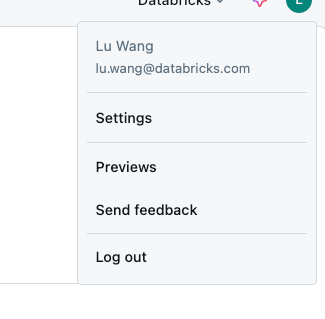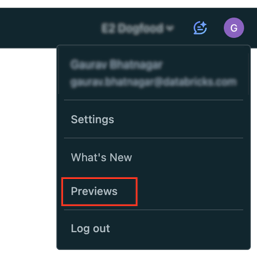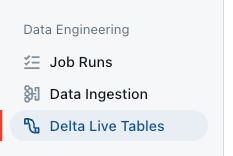Constructing an end-to-end AI or ML platform typically requires a number of technological layers for storage, analytics, enterprise intelligence (BI) instruments, and ML fashions as a way to analyze knowledge and share learnings with enterprise capabilities. The problem is deploying constant and efficient governance controls throughout completely different elements with completely different groups.
Unity Catalog is Databricks’ built-in, centralized metadata layer designed to handle knowledge entry, safety, and lineage. It additionally serves as the inspiration for search and discovery inside the platform. Unity Catalog facilitates collaboration amongst groups by providing strong options like role-based entry management (RBAC), audit trails, and knowledge masking, making certain delicate data is protected with out hindering productiveness. It additionally helps the end-to-end lifecycles for ML fashions.
This information will present a complete overview and tips on learn how to use unity catalogs for machine studying use circumstances and collaborating amongst groups by sharing compute sources.
This weblog submit takes you thru the steps for the top to finish lifecycle of machine studying with the benefit options with unity catalogs on Databricks.
The instance on this article makes use of the dataset containing information for the variety of circumstances of the COVID-19 virus by date within the US, with further geographical data. The objective is to forecast what number of circumstances of the virus will happen over the subsequent 7 days within the US.
Key Options for ML on Databricks
Databricks launched a number of options to have higher assist for ML with unity catalog
Necessities
- The workspace have to be enabled for Unity Catalog. Workspace admins can examine the doc to point out learn how to allow workspaces for unity catalog.
- You need to use Databricks Runtime 15.4 LTS ML or above.
- A workspace admin should allow the Compute: Devoted group clusters preview utilizing the Previews UI. See Handle Databricks Previews.
- If the workspace has Safe Egress Gateway (SEG) enabled, pypi.org have to be added to the Allowed domains checklist. See Managing community insurance policies for serverless egress management.
Setup a gaggle
With a purpose to allow the collaboration, an account admin or a workspace admin must setup a gaggle by
- Click on your person icon within the higher proper and click on Settings

- Within the “Workspace Admin” part, click on “Id and entry”, then click on “Handle” within the Teams part
- Click on “Add group”,
- click on “Add new”
- Enter the group title, and click on Add
- Seek for your newly created group and confirm that the Supply column says “Account”
- Click on your group’s title within the search outcomes to go to group particulars
- Click on the “Members” tab and add desired members to the group
- Click on the “Entitlements” tab and examine each “Workspace entry” and “Databricks SQL entry” entitlements
- If you need to have the ability to handle the group from any non-admin account, you’ll be able to grant “Group: Supervisor” entry to the account within the “Permissions” tab
- NOTE: person account MUST be a member of the group as a way to use group clusters – being a gaggle supervisor will not be enough.
Allow Devoted group clusters
Devoted group clusters are in public preview, to allow the characteristic, the workspace admin ought to allow the characteristic utilizing the Previews UI.
- Click on your username within the high bar of the Databricks workspace.

- From the menu, choose Previews.
- Use toggles On for Compute: Devoted group clusters to allow or disable previews.
Create Group compute
Devoted entry mode is the most recent model of single person entry mode. With devoted entry, a compute useful resource could be assigned to a single person or group, solely permitting the assigned person(s) entry to make use of the compute useful resource.
To create a Databricks runtime with ML with
- In your Databricks workspace, go to Compute and click on Create compute.
- Verify “Machine studying” within the Efficiency part to decide on Databricks runtime with ML. Select “15.4 LTS” in Databricks Runtime. Choose desired occasion sorts and variety of employees as wanted.
- Develop the Superior part on the underside of the web page.
- Below Entry mode, click on Guide after which choose Devoted (previously: Single-user) from the dropdown menu.
- Within the Single person or group discipline, choose the group you need assigned to this useful resource.
- Configure the opposite desired compute settings as wanted then click on Create.
After the cluster begins, all customers within the group can share the identical cluster. For extra particulars, see greatest practices for managing group clusters.
Knowledge Preprocessing through Delta dwell desk (DLT)
On this sectional, we’ll
- Learn the uncooked knowledge and save to Quantity
- Learn the information from the ingestion desk and use Delta Reside Tables expectations to create a brand new desk that comprises cleansed knowledge.
- Use the cleansed information as enter to Delta Reside Tables queries that create derived datasets.
To setup a DLT pipeline, chances are you’ll must following permissions:
- USE CATALOG, BROWSE for the dad or mum catalog
- ALL PRIVILEGES or USE SCHEMA, CREATE MATERIALIZED VIEW, and CREATE TABLE privileges on the goal schema
- ALL PRIVILEGES or READ VOLUME and WRITE VOLUME on the goal quantity
- Obtain the info to Quantity: This instance masses knowledge from a Unity Catalog quantity.
Change, , and with the catalog, schema, and quantity names for a Unity Catalog quantity. The offered code makes an attempt to create the desired schema and quantity if these objects don’t exist. You need to have the suitable privileges to create and write to things in Unity Catalog. See Necessities. - Create a pipeline. To configure a brand new pipeline, do the next:
- Within the sidebar, click on Delta Reside Tables in Knowledge Engineering part.

- Click on Create pipeline.
- In Pipeline title, sort a singular pipeline title.
- Choose the Serverless checkbox.
- In Vacation spot, to configure a Unity Catalog location the place tables are revealed, choose a Catalog and a Schema.
- In Superior, click on Add configuration after which outline pipeline parameters for the catalog, schema, and quantity to which you downloaded knowledge utilizing the next parameter names:
- my_catalog
- my_schema
- my_volume
- Click on Create.
The pipelines UI seems for the brand new pipeline. A supply code pocket book is routinely created and configured for the pipeline.
- Within the sidebar, click on Delta Reside Tables in Knowledge Engineering part.
- Declare materialized views and streaming tables. You should use Databricks notebooks to interactively develop and validate supply code for Delta Reside Tables pipelines.
- Begin a pipeline replace by clicking the beginning button on high proper of the pocket book or the DLT UI. The DLT will probably be generated to the catalog and schema outlined the DLT
`.. `
Mannequin Coaching on the materialized view of DLT
We’ll launch a serverless forecasting experiment on the materialized view generated from the DLT.
- click on Experiments within the sidebar in Machine Studying part
- Within the Forecasting tile, choose Begin coaching
- Fill within the config varieties
- Choose the materialized view because the Coaching knowledge:
`. .covid_case_by_date` - Choose date because the Time column
- Choose Days within the Forecast frequency
- Enter 7 within the horizon
- Choose circumstances within the goal column in Prediction part
- Choose Mannequin registration as
`. ` - Click on Begin coaching to start out the forecasting experiment.
- Choose the materialized view because the Coaching knowledge:
After coaching completes, the prediction outcomes are saved within the specified Delta desk and the perfect mannequin is registered to Unity Catalog.
From the experiments web page, you select from the next subsequent steps:
- Choose View predictions to see the forecasting outcomes desk.
- Choose Batch inference pocket book to open an auto-generated pocket book for batch inferencing utilizing the perfect mannequin.
- Choose Create serving endpoint to deploy the perfect mannequin to a Mannequin Serving endpoint.
Conclusion
On this weblog, we’ve explored the end-to-end strategy of organising and coaching forecasting fashions on Databricks, from knowledge preprocessing to mannequin coaching. By leveraging unity catalogs, group clusters, delta dwell desk, and AutoML forecasting, we have been capable of streamline mannequin improvement and simplify the collaborations between groups.